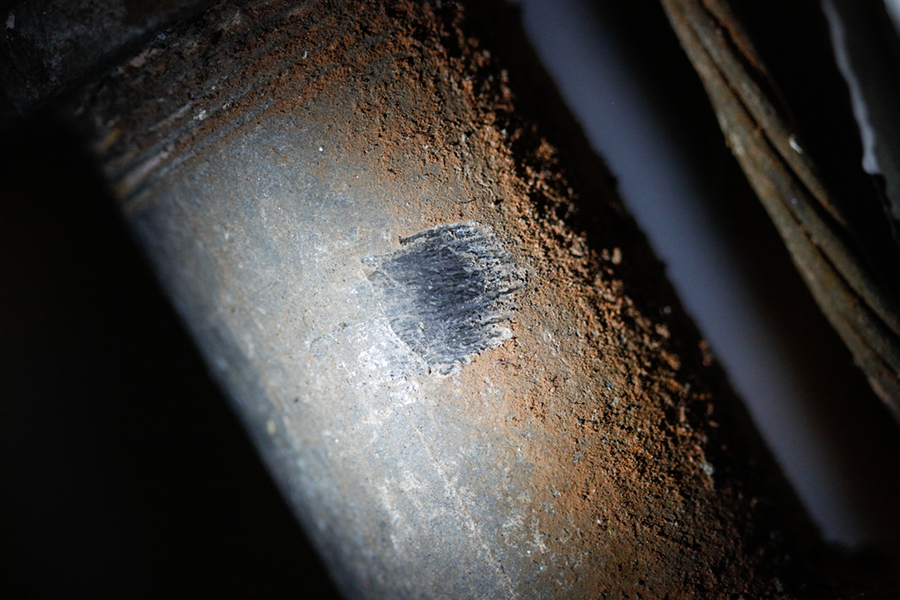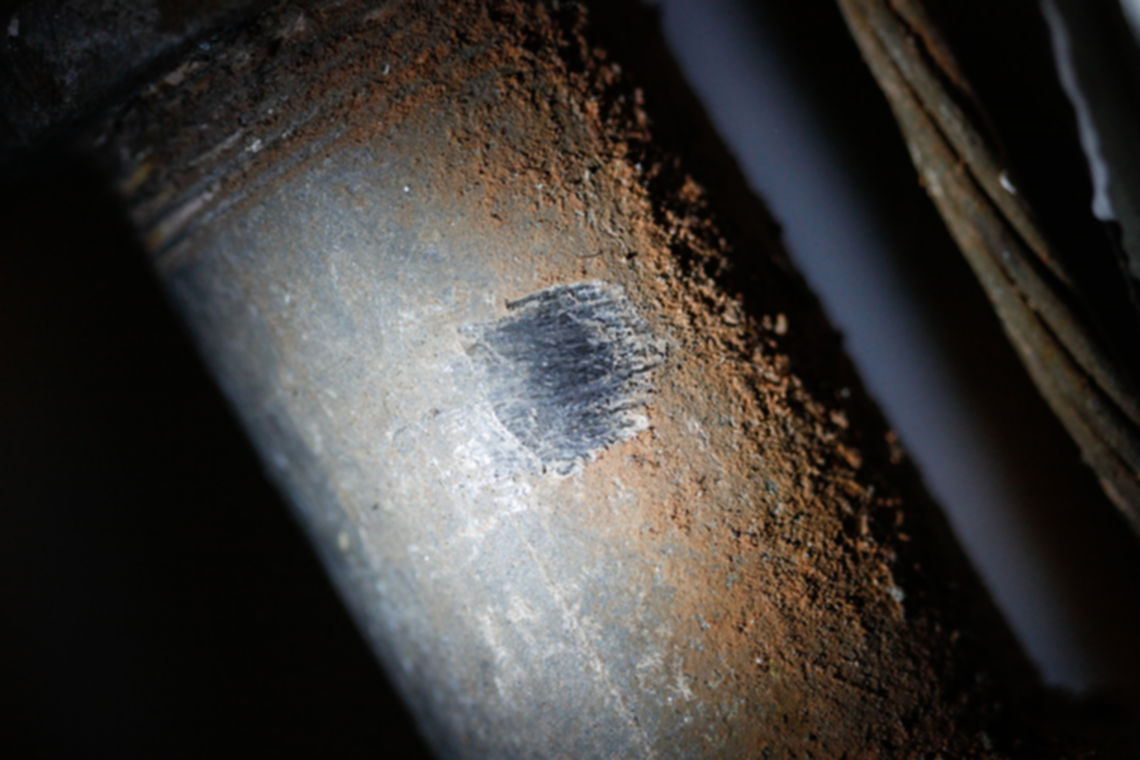Your pipes are probably made of copper
That’s great because they aren’t made of lead – congratulations! But it’s still possible that you might have lead fittings or solder somewhere in the plumbing, especially if it was installed before 1960. If you want to check whether there’s lead in your water, try requesting a test from your water utility. You could also think about getting a water filter that is certified for lead removal (it should say “NSF/ANSI Standard 53” on the package). And you can always call up a plumber to check for lead.
Share this tool with a friend, neighbor or family member
Find the pipe
It should be 1 inch in diameter and enter the house from a few feet underground before connecting to the water meter. You'll also see a valve on it, which looks something like this.
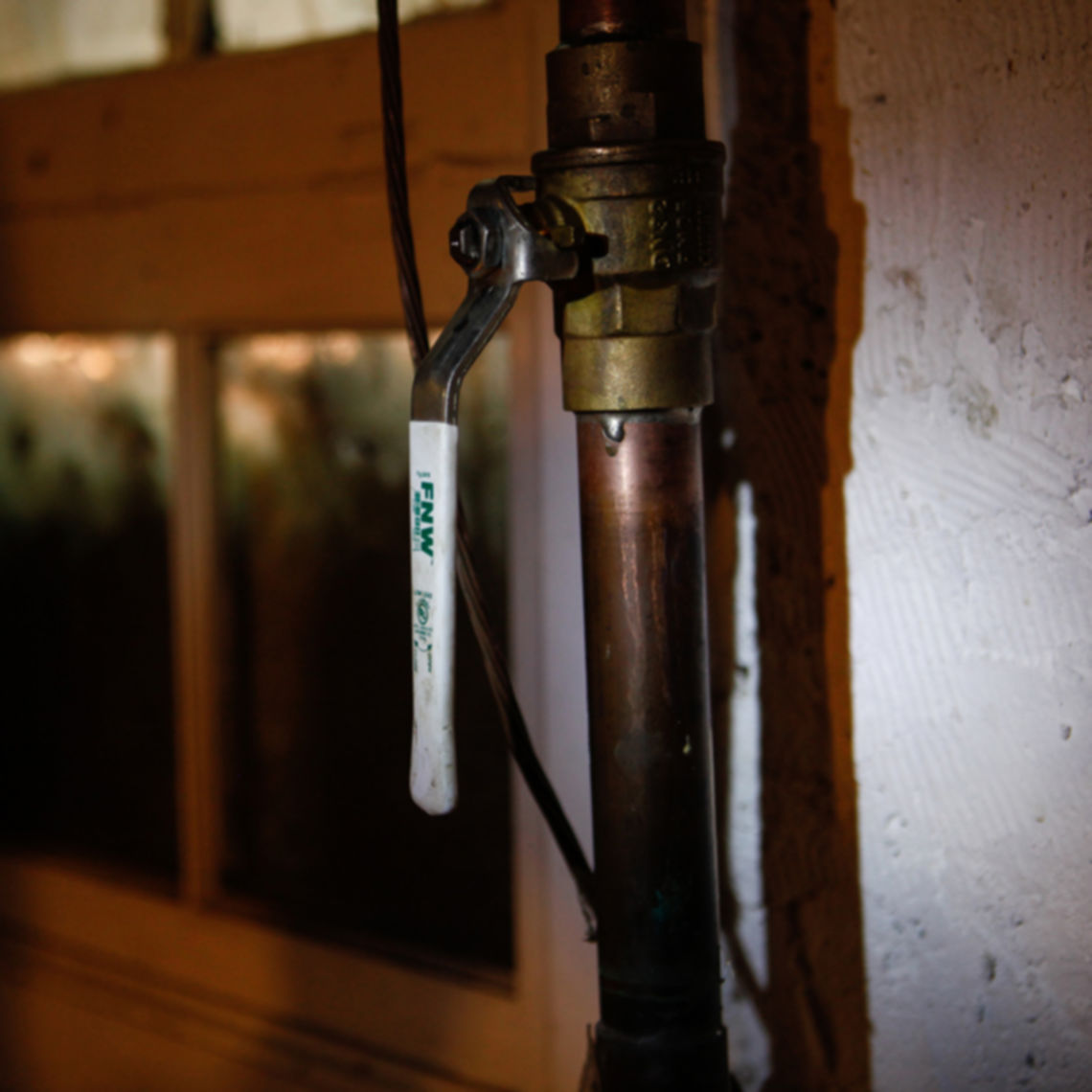
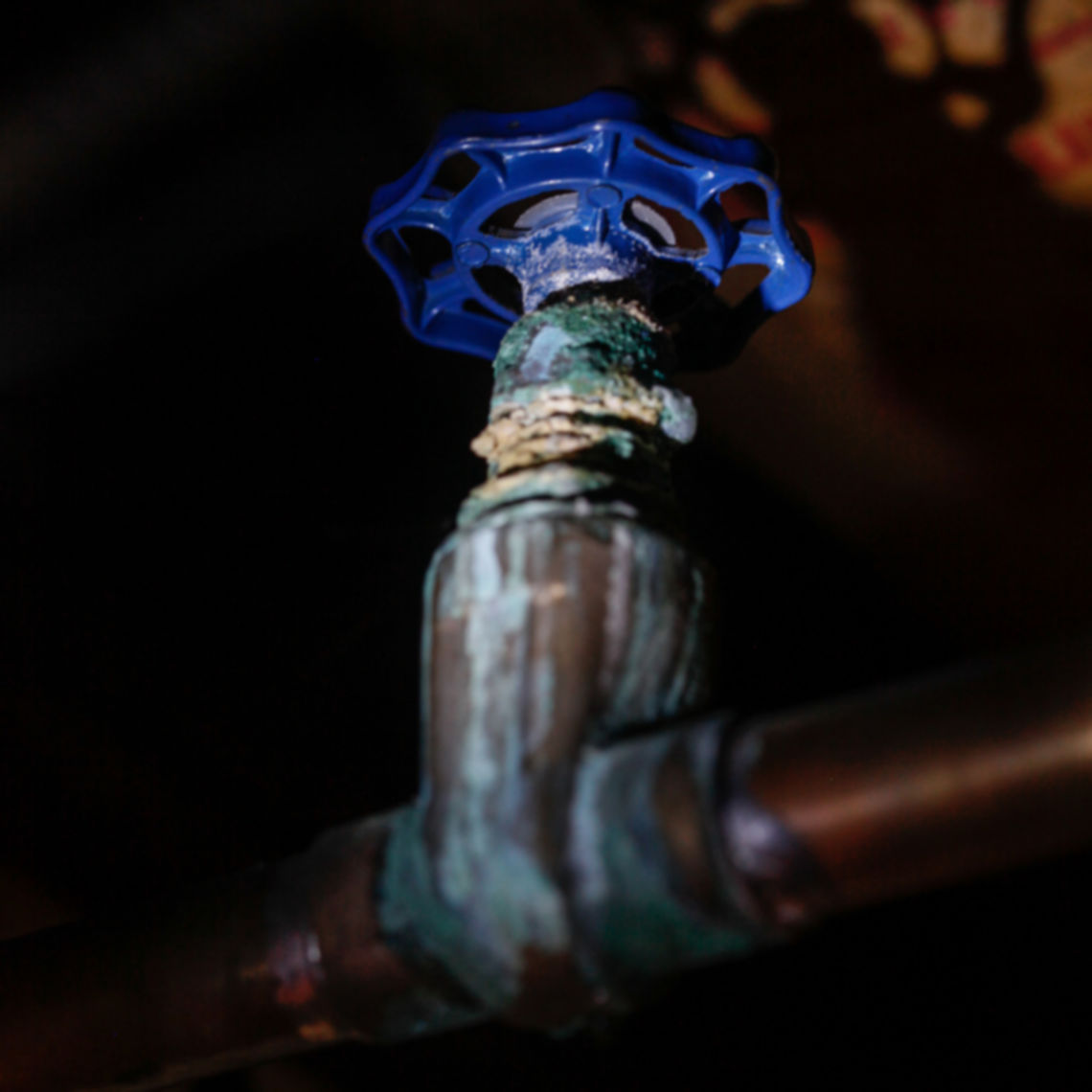
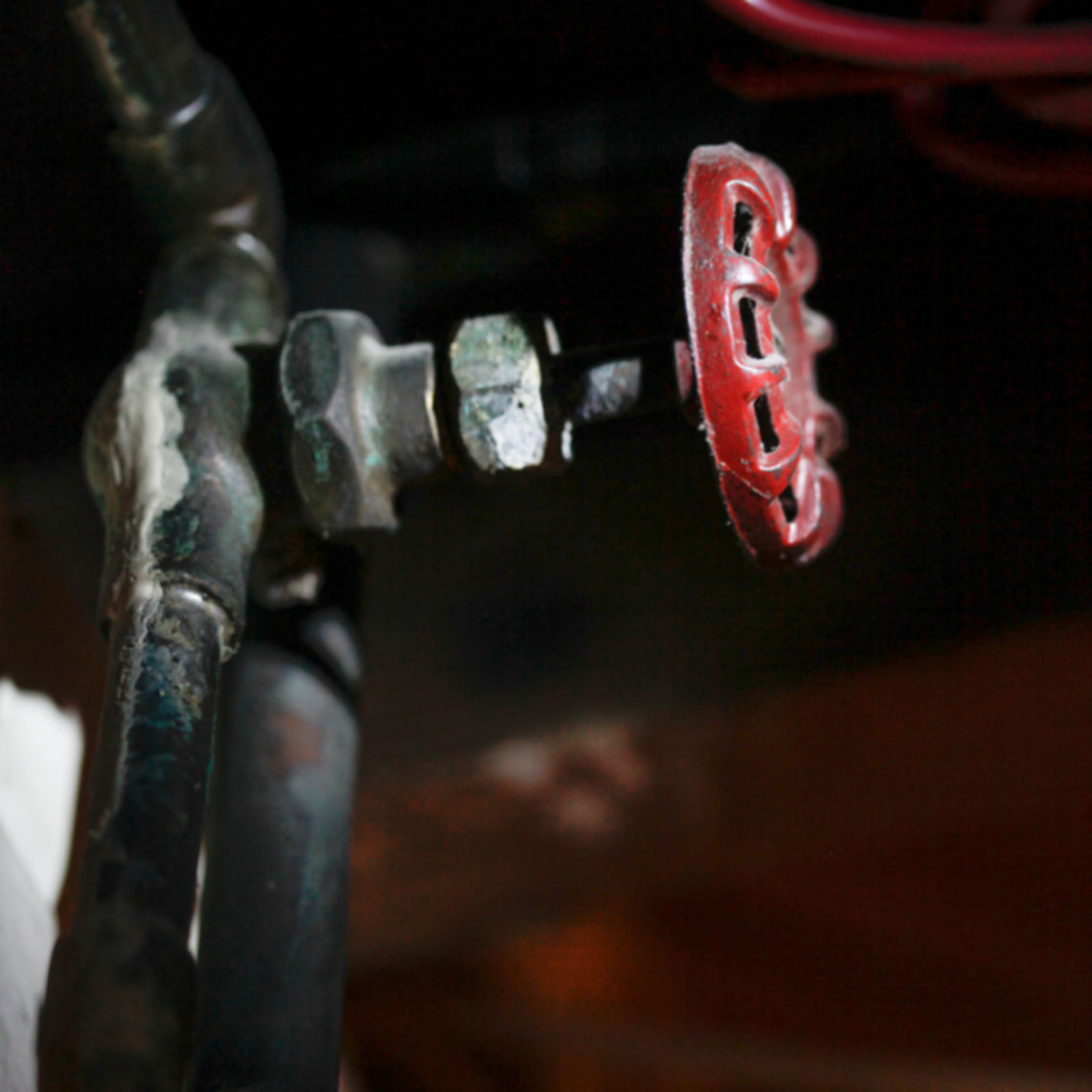
Found it?
Find the pipe
Walk the shortest path from the water meter (or well cap) to your home. That’s where the pipe will enter your house. Now go inside and find the pipe.
It should be 1 inch in diameter, and have a shutoff valve that looks something like this. (If you have a well, it should lead to a pressure tank, with a faucet at the base).



Found it?
Use a magnet
Try the magnet on it — does it stick?
Do you have lead pipes in your home?
Lead exposure, even in small amounts, may cause health problems. It is connected with behavior and learning problems in kids, and high blood pressure and kidney problems in adults.
Lead in water systems is one possible source of exposure, and that’s because in many homes, the pipe that connects the building's plumbing to the water system is still made of lead.
We’ll help you find out whether your drinking water is at risk in a few simple steps. You won't need anything fancier than a magnet and a coin, but you will need to be at home to follow along.
If you do find lead, we’ll show you what you can do.
Or, if you already know you have lead pipes, here's what to do next.
First published June 24, 2016. Last updated Aug. 11, 2016.
Background photo: Seth Perlman/AP
This site is a product/service of NPR. Use is governed by NPR's terms of use and privacy policy.
Is the pipe plastic?
You’ve got lead pipes
Here’s what you can do:
If you want to know how lead might be affecting your water, try requesting a test from your water utility. You can order tests online, too, but they aren’t as good.
Consider replacing your pipes. Call a local plumber to get an estimate. Your water utility might also have recommendations.
If that’s not an option, think about getting a water filter that is certified for lead removal (it should say “NSF/ANSI Standard 53” on the package). And if it’s been a few hours since you last used a tap in your house, it’s a good idea to let the water run for five minutes before you use it, to flush out any water that’s been sitting in the pipes.
Share this tool with a friend, neighbor or family member
Help us collect data about lead pipes
There is a lack of data about where lead pipes exist. You can help us learn more by providing your information below. We will use your response for analysis and we may contact you for reporting purposes. We may also share your response with NPR member stations for analysis and reporting purposes.
This site is a product/service of NPR. Use is governed by NPR's terms of use and privacy policy.
Use a magnet
Try the magnet on it – does it stick?
What's a service line?
When lead gets into tap water, it often happens right before it enters the home — through what is called a service line.
Service lines are like straws that carry water to your house from the main. Often, the part up to the property line is considered public, and may have been replaced by the water utility. But in a lot of cities, most of the service line is considered private property — and the homeowner’s responsibility.
Service lines can be pure lead. If they aren’t made of lead, they might be soldered together with lead.
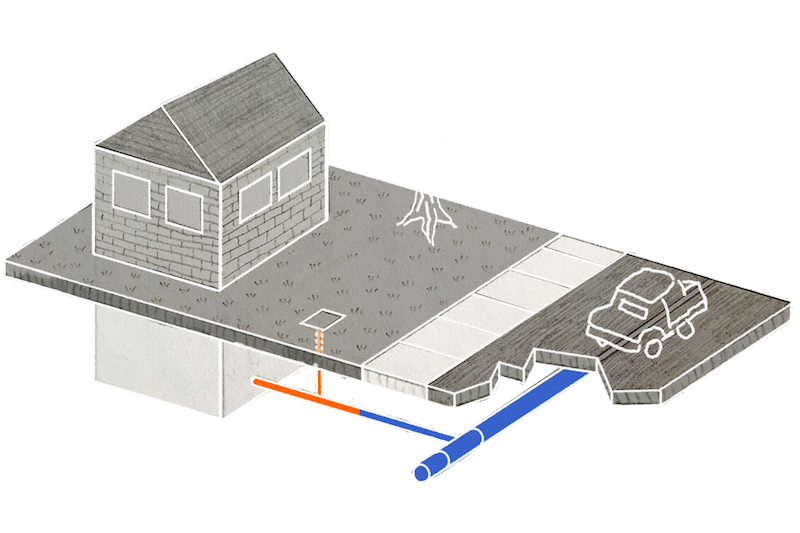
Illustration: Katherine Du
To find out what your service line is made of, you’ll need a refrigerator magnet, and a key or a coin.
Next: Find your water meterYour pipes are made of plastic
That’s good. The effect of plastic pipes on health hasn’t been extensively studied, but it’s generally accepted that they’re a good way to go when it comes to plumbing.
There’s still a chance you could have lead fittings or solder somewhere in your plumbing. If you want to check whether there’s lead in your water, try requesting a test from your water utility. If you’re concerned, you could also think about getting a water filter that is certified for lead removal (it should say “NSF/ANSI Standard 53” on the package).And you can always call up a plumber to check for lead.
Share this tool with a friend, neighbor or family member
You might have lead pipes
To confirm, call your water utility or landlord and ask, “What is the private service line bringing water into my house made of?”
If it is lead, here’s what you can do:
If you want to get a sense of how lead might be affecting your water, request a test from your water utility. (You can order tests online, too, but they aren’t as good.) But remember, lead release is sporadic, and one good test doesn’t mean you’re in the clear.
Consider replacing your pipes. Call a local plumber to get an estimate. Your water utility might also have recommendations.
If that’s not an option, think about getting a water filter that is certified for lead removal (it should say “NSF/ANSI Standard 53” on the package). And if it’s been a few hours since you last used a tap in your house, it’s a good idea to let the water run for five minutes before you use it, to flush out any water that’s been sitting in the pipes.
Share this tool with a friend, neighbor or family member
Help us collect data about lead pipes
There is a lack of data about where lead pipes exist. You can help us learn more by providing your information below. We will use your response for analysis and we may contact you for reporting purposes. We may also share your response with NPR member stations for analysis and reporting purposes.
This site is a product/service of NPR. Use is governed by NPR's terms of use and privacy policy.
Scratch the pipe
Use the key or coin to scratch the pipe close to where it enters the house through the wall, usually from a few feet underground.
What color is it underneath?
Was the pipe hard to scratch?
Was it soft or hard when you tried to scratch it?
Your pipes are probably galvanized steel
That’s good, but not great. If rusty pipes are connected to lead plumbing, they can trap bits of the metal on the inside surface. The steel pipes can periodically release those bits of lead, even after lead plumbing is removed.
And it’s still possible that you might have some lead fittings or solder in your plumbing. It’s probably a good idea to use a filter that is certified to remove lead (it should say “NSF/ANSI Standard 53” on the package). And you can always call up a plumber to check.
If you want to know whether lead is leaching into your water, request a test from your water utility. You can order tests online, too, but they aren’t as good.
Share this tool with a friend, neighbor or family member
Bummer. It's not clear what kind of pipe you have
Your pipe could be made of plastic, copper, galvanized steel or lead.
To find out what kind of service line you have, call your water utility or landlord. Ask: “What is the private service line bringing water into my house made of?” You can also call a plumber and ask them to come take a look.
And if you find out it is made of lead, here’s what you can do:
If you want to get a sense of how bad the problem might be, try requesting a test from your water utility. But remember, lead release is sporadic, and one good test doesn’t mean you’re in the clear.
Consider replacing your pipes. Call a local plumber to get an estimate. Your water utility might also have recommendations.
If that’s not an option, think about getting a water filter that is certified for lead removal (it should say “NSF/ANSI Standard 53” on the package). And if it’s been a few hours since you last used a tap in your house, it’s a good idea to let the water run for five minutes before you use it, to flush out any water that’s been sitting in the pipes.
Find your water meter
It could be outside, on the sidewalk or in the part of the yard that faces the street, and look something like this.

Or it could be inside, in the basement, crawlspace or even garage, and look like this.
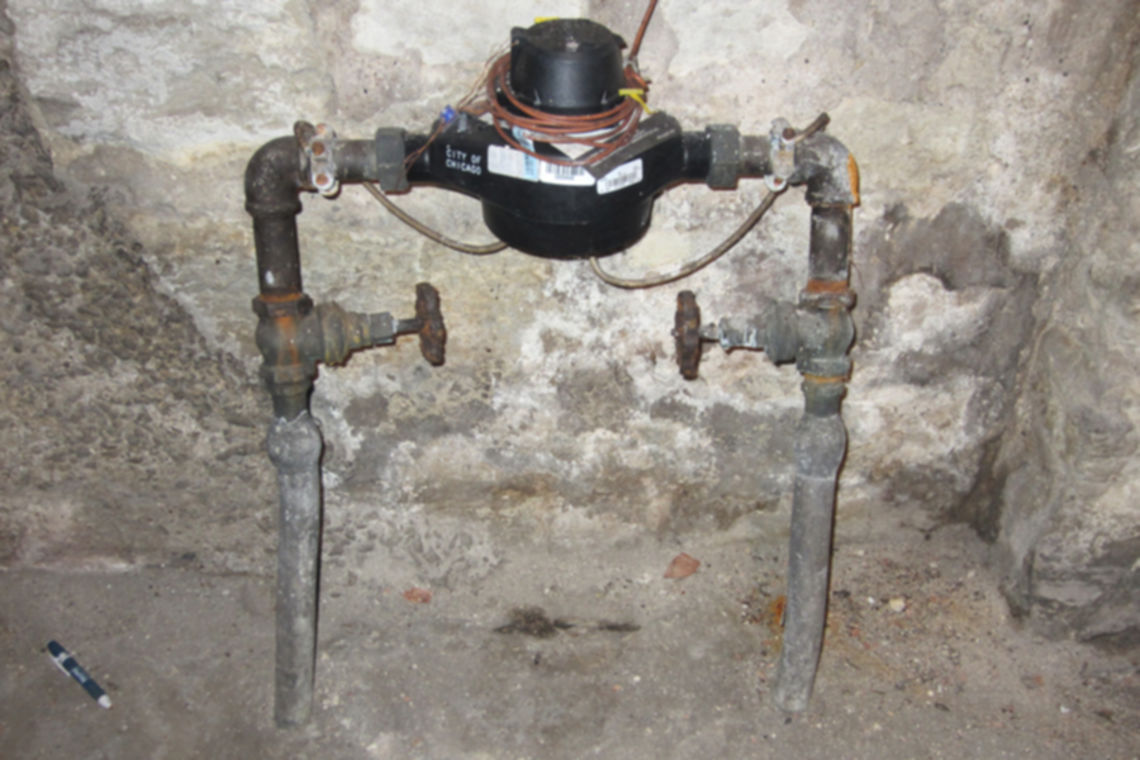
Your water meter should say “gallons” on the dial, whereas the units on a gas or electric meter will say “cubic feet” or “kilowatt hours.” (If you have a well, you’ll want to look for the well cap.)
What to do if you have lead pipes
Here’s what you can do:
If you want to know how lead might be affecting your water, try requesting a test from your water utility. You can order tests online, too, but they aren’t as good.
Consider replacing your pipes. Call a local plumber to get an estimate. Your water utility might also have recommendations.
If that’s not an option, think about getting a water filter that is certified for lead removal (it should say “NSF/ANSI Standard 53” on the package). And if it’s been a few hours since you last used a tap in your house, it’s a good idea to let the water run for five minutes before you use it, to flush out any water that’s been sitting in the pipes.


